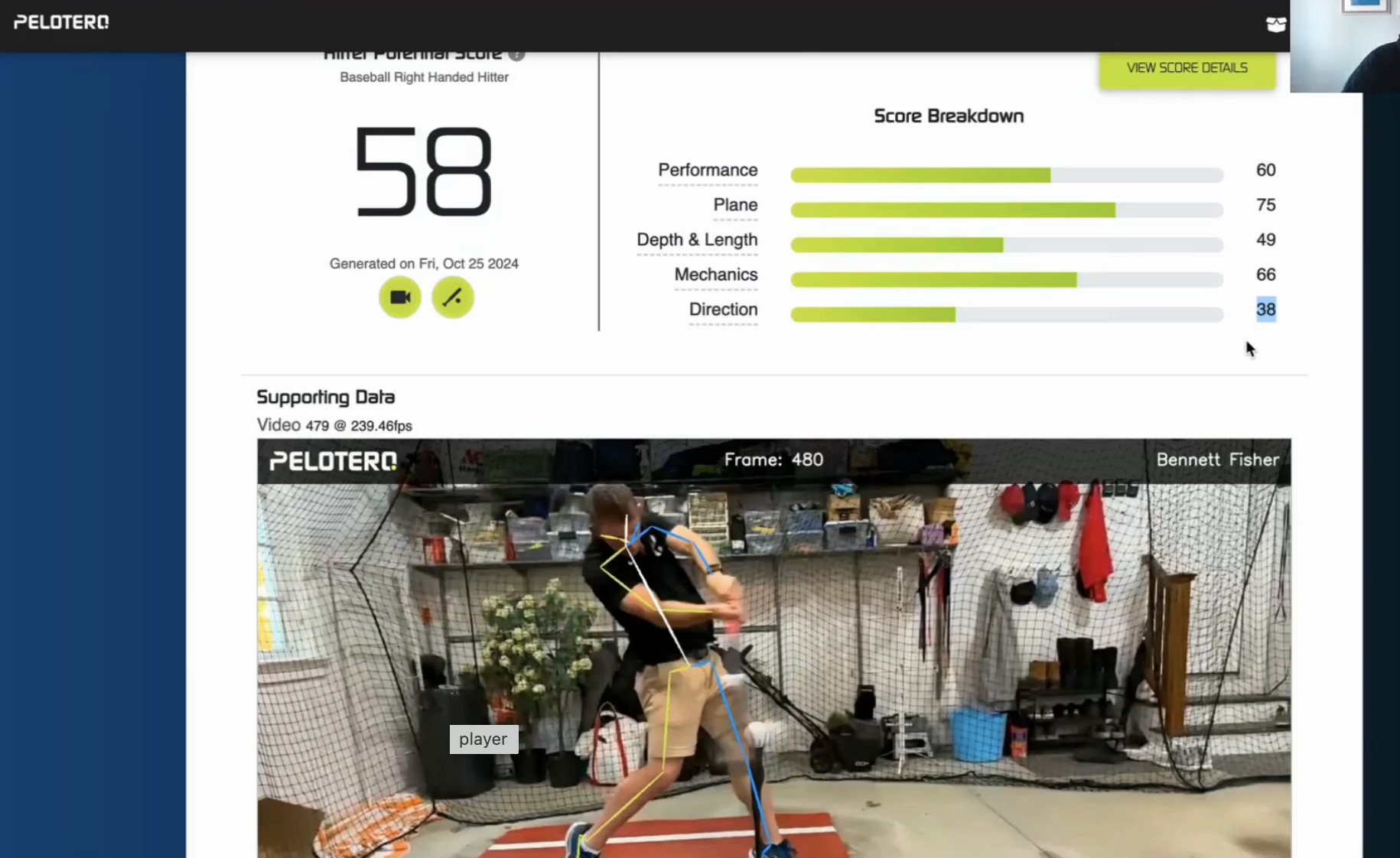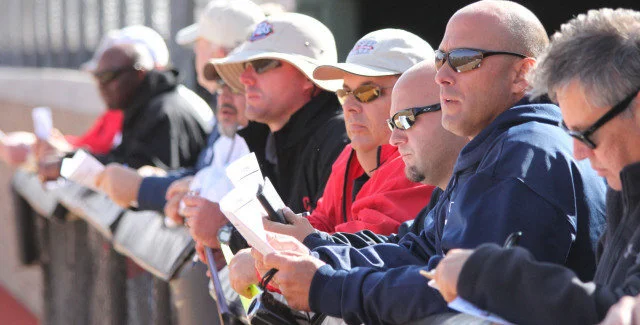It's November in the Chicago suburbs. The fields are frozen, it's dark by 4:30 PM, and the last thing you want to think about is baseball practice. Your kid's bat is collecting dust in the garage, and spring feels like a lifetime away.
But here's what I know after years of coaching and running Gorilla Baseball: winter is where we separate the players who want it from the players who are just killing time until something else catches their attention.
The kids who show up to our first practice in March with better bat speed, cleaner mechanics, and real confidence? They didn't get there by accident. They put in work when nobody was watching. And honestly, it doesn't take what most parents think it takes.
Let Me Be Blunt About Something
Your player will face live pitching in April. Period. The question isn't whether that's happening—the question is whether they'll be ready or spending the first month of the season shaking off rust and fighting bad habits that crept in over the winter.
I see it every year:
Kids who don't touch a bat November through February:
Timing is off (everything feels like 100 mph)
Mechanics fall apart (muscle memory is gone)
Bat speed drops (use it or lose it)
Confidence tanks (they're behind and they know it)
Kids who put in 15-20 minutes a day:
Mechanics are dialed in (repetition builds habits)
Bat speed is UP (not just maintained, but improved)
Plate discipline is better (quality reps build quality instincts)
Confidence is sky-high (they KNOW they did the work)
Which kid do you want at the plate in April?
What You Actually Need
Training facilities are great—we have one for a reason. But the reality is that most development happens at home, in between our team practices. And the good news is you don't need much space or equipment to make real progress.
Here's what works in a basement, garage, or even a bedroom:
The Essentials (under $75):
Batting tee ($30-40)
Wiffle balls or foam balls ($10-15)
Resistance band ($15)
A notebook (you probably have one)
If You Want to Level Up (under $150):
Add a hitting net ($40-60)
Get some limited-flight balls ($20)
If You're All In (under $250):
Better adjustable tee ($50-70)
Net with strike zone target ($80-120)
Weighted bat or bat weight ($25-35)
That's it. Less than most families spend on one weekend tournament. And this investment actually changes their swing.
The Daily Commitment That Actually Works
I'm not asking your kid to train like they're trying out for the Cubs. I'm asking for 20 minutes a day, 5-6 days a week.
Not two hours. Not until their hands are bleeding. Twenty focused minutes.
Here's why: quality matters more than quantity. Forty focused swings with a specific goal beats 200 mindless hacks every single time.
What 20 minutes looks like:
Monday: Launch Position
50 tee swings focusing ONLY on getting to a perfect launch position
Write down how many felt "right" in their notebook
Wednesday: Contact Points
25 swings on inside pitches (tee inside)
25 swings on outside pitches (tee outside)
Track solid contact vs. mishits
Friday: Opposite Field
50 swings driving the ball the other way
Focus on letting it travel, staying through it
The key is intentional repetition. Random swinging builds nothing but bad habits. Focused work with a clear purpose? That's how we build real hitters.
Your Role as a Parent (It's Simpler Than You Think)
You don't need to be a hitting coach. Honestly, unless you've studied hitting mechanics extensively, please don't try to be. Here's what actually helps:
Do These Things:
Give them 20 uninterrupted minutes every day
Flip soft toss 1-2 times a week (just flip it, don't coach it)
Make them log their work in a notebook
Celebrate the effort, not the perfect swing
Record video occasionally so they can watch themselves
Don't Do These Things:
Try to fix their swing (that's my job and their coaches' job)
Compare them to their teammates or travel ball rivals
Make practice feel like punishment
Expect immediate results—this is a process
Your job is accountability and support. Our job is teaching mechanics. Let's stay in our lanes.
The Notebook Is Non-Negotiable
I'm serious about this. Every player needs a notebook or notes app on their phone.
After every session, they write:
Date
What they worked on
Number of quality swings
One thing that improved
One thing to work on tomorrow
This turns random basement swings into deliberate practice. And when they show up in March with 60+ logged sessions, they KNOW they put in the work. That confidence is real because it's earned.
"But Coach, My Kid Doesn't Want To..."
Yeah, I hear you. Not every 11-year-old is bouncing out of bed excited to hit off a tee in the basement. That's normal. Here's how I'd handle it:
Start smaller if you need to: 10 minutes beats zero. Build the habit first, extend it later.
Make it part of the routine: Like homework. Like chores. It's not optional, it's just what we do.
Connect it to THEIR goals: "You told me you wanted to hit cleanup and play shortstop. This is how that happens. Or you can skip it and hope someone else skips it too."
Let reality be the teacher: Come March, the kids who did the work will show it. Sometimes watching their teammate who DID the work is the wake-up call they need.
And here's the thing—if your player genuinely doesn't care about getting better? That's okay. Not every kid needs to be a grinder. But if they SAY they want to start, if they SAY they want to hit better, then they need to understand: winter work is the price of admission.
What Spring Looks Like When You Do The Work
Picture this: First game in April. Your kid steps in the box.
Their hands are quick. Their load is automatic. They've taken 2,000+ focused swings since November. They're not hoping to get lucky—they're hunting.
That's the kid who did the work.
Now picture the kid who took three months off. They're fighting their timing. Their hands feel slow. They're frustrated because they KNOW they should be better.
Winter decides which kid yours is going to be.
Let's Make This Winter Mean Something
At Gorilla Baseball, we'll train your player 2-3 times a week once we start in November. We have a great facility with everything they need—cages, HitTrax, training equipment, and expert coaching. But I'm telling you right now: that's not enough. It's never enough.
The players who dominate aren't just the most talented. They're the ones who put in daily work at home when nobody is watching, nobody is cheering, and it's just them and a tee in a cold garage.
This winter, commit to 20 minutes a day. Get the basic equipment (you can do it for under $75). Make them track it. Stay on them about consistency.
Come spring, your player won't just be ready—they'll be ahead.
And THAT is when baseball gets really fun.
Want specific homework plans or help getting started? Reach out to us at Gorilla Baseball Academy. We'll help you build a plan that fits your space, your budget, and your player's needs. And if you want to supplement the home work with facility time, we've got that too—open gym time, HitTrax sessions, and private lessons are all available to help accelerate development.
Let's build some hitters this winter.
Visit: www.gorillabball.com
Location: 958 Corporate Woods Parkway, Vernon Hills, IL 60061
Coach Dolenga owns and operates Gorilla Baseball Academy and coaches for Gorilla Baseball Club travel teams. He's passionate about player development and believes winter work is where championships are built.





